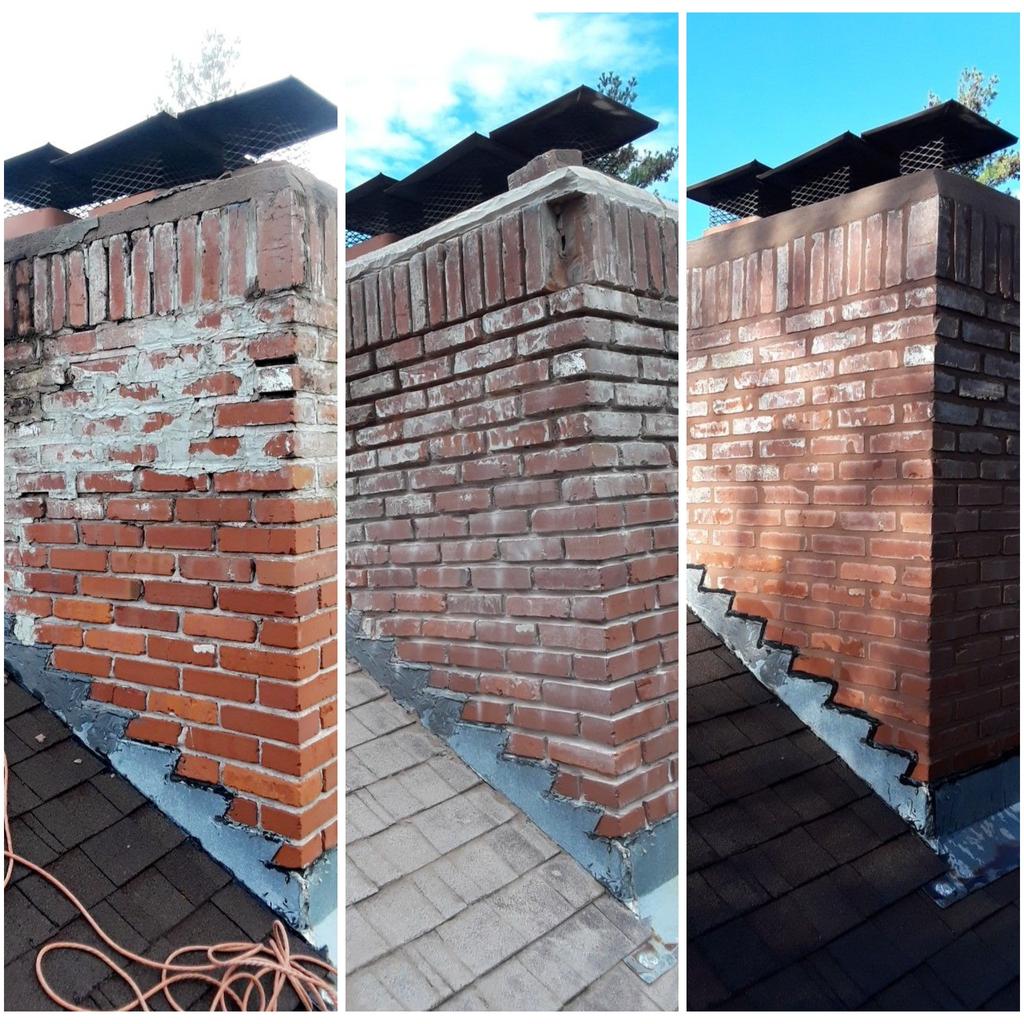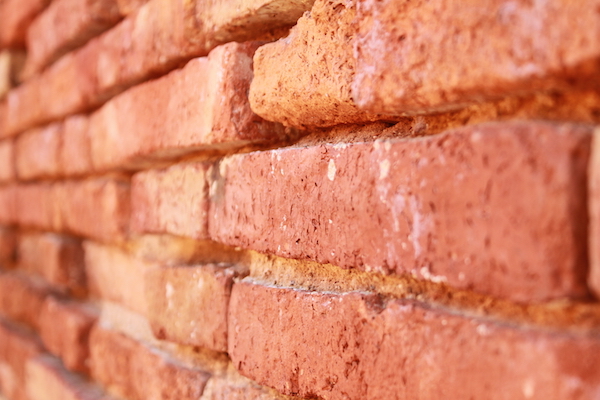Raul's Tuckpointing St. Louis MO: Establishing the Criterion for Specialist Stonework Fixing
Wiki Article
Improve the Elegance and Durability of Your Brickwork With Tuckpointing
Brickwork has long been esteemed for its classic charm and sturdiness. Over time, the mortar that holds those blocks with each other can weaken, leaving your structure at risk to harm and taking away from its aesthetic appeal. However concern not, for there is a solution that can restore both the appeal and longevity of your brickwork: tuckpointing. This age-old technique not only boosts the visual appeal of your brickwork, however likewise strengthens its architectural stability. What specifically is tuckpointing and just how does it vary from repointing? And just how can you make certain that your tuckpointed brickwork continues to be in immaculate problem? In this conversation, we will certainly discover the fundamentals of tuckpointing, its advantages, the distinction between tuckpointing and repointing, the process itself, and the essential methods for maintaining and caring for tuckpointed brickwork.The Basics of Tuckpointing
Tuckpointing is an experienced strategy utilized to repair and boost the look and architectural stability of brickwork. It involves the procedure of eliminating shabby mortar joints and changing them with fresh mortar. The term "tuckpointing" refers to the technique of utilizing 2 different shades of mortar to produce the illusion of fine joints, giving the brickwork a much more refined and visually pleasing appearance.
The very first step in tuckpointing is to meticulously evaluate the problem of the brickwork. This involves evaluating the mortar joints for indications of damage, such as breaking, collapsing, or missing mortar. Once the problem locations have been determined, the old mortar is carefully eliminated making use of specialized tools, such as a mill or carve, while guaranteeing that the blocks themselves remain undamaged.
After the old mortar has actually been removed, the next action is to prepare the joints for fresh mortar. This generally includes cleansing out any debris or loose product and dampening the joints to ensure proper bond. A competent tuckpointer utilizes an aiming trowel to carefully fill the joints with fresh mortar, making sure to produce a consistent and flush surface area.
Advantages of Tuckpointing
Improving both the long life and look of brickwork, tuckpointing offers several noteworthy benefits for property owners and property proprietors alike. Among the major benefits of tuckpointing is its capacity to expand the life-span of block frameworks. By changing tatty mortar joints, tuckpointing prevents dampness from permeating right into the brickwork, which can bring about architectural damages gradually. This helps to preserve the integrity of the brickwork and prolong its overall resilience.Over time, mortar joints can come to be fractured, discolored, or discolored, taking away from the overall look of the brickwork. Tuckpointing entails carefully getting rid of the harmed mortar and replacing it with fresh mortar of a different shade.
Along with boosting the durability and look of brickwork, tuckpointing can also boost the worth of a residential or commercial property. Well-kept brickwork is seen as a preferable function by prospective customers and can substantially boost the curb appeal of a building. This can lead to a higher asking price and a quicker sale when the time concerns put the residential property on the market.
Tuckpointing Vs. Repointing: What's the Distinction?

To identify between tuckpointing and repointing, it is necessary to recognize the vital distinctions between these 2 approaches of brickwork remediation. While both methods intend to preserve the structural stability and visual charm of brickwork, they differ in their technique and implementation.
Tuckpointing is a meticulous procedure that involves applying two different shades of mortar to create the illusion of great joints. This method is primarily made use of to enhance the aesthetic appeal of brickwork by producing the look of properly maintained and well-crafted joints. The tinted mortar is very carefully used and formed to match the shade and profile of the initial mortar, offering the perception of accuracy and workmanship.
On the other hand, repointing is a much more straightforward procedure that entails view it removing broken or tatty mortar from the joints and replacing it with fresh mortar. The primary objective of repointing is to restore the structural integrity of the brickwork by ensuring correct bonding and securing between the bricks. Unlike tuckpointing, repointing does not involve using colored mortar or the development of an attractive impact.
The Process of Tuckpointing
The application of two various colors of mortar to produce the illusion of fine joints is a thorough procedure called tuckpointing. This method includes getting rid of worn-out mortar joints and changing them with brand-new mortar to enhance the look and structural honesty of the brickwork. The procedure of tuckpointing can be divided right into a number of actions.First, the old mortar is thoroughly removed making use of specialized devices such as knives and mills. It is necessary to get rid of the mortar to an adequate deepness to guarantee a strong bond with the brand-new mortar.
Next, the joints are completely cleansed to eliminate any type of particles or dust. This aids to develop a tidy surface area for the brand-new mortar to follow.
When the joints are cleansed, a slim layer of brand-new mortar is related to the joint utilizing a little aiming trowel. This initial layer, known as the "aiming up" mortar, is typically the very same shade as the existing mortar.
After the preliminary layer has been applied, a second layer of mortar is used on top of it. This 2nd layer, called the "fillet" mortar, is a various color and is very carefully formed to develop the illusion of a great joint.

Caring and preserving for Tuckpointed Brickwork
As soon as the tuckpointing procedure is finished, correct upkeep and care are crucial to preserve the boosted beauty and longevity of the brickwork. This maintenance not only makes certain that the tuckpointed areas stay undamaged and functional but likewise more information helps to avoid any potential damage to the total structure.Among the crucial aspects of preserving tuckpointed brickwork is regular cleansing. This involves getting rid of any dust, debris, or moss that might collect externally of the bricks. A soft brush or a low-pressure power washing machine can be used for this objective. It is necessary to stay clear of utilizing any kind of severe chemicals or unpleasant tools that might potentially damage the mortar or the blocks themselves.
In enhancement to cleaning, it is essential to examine the tuckpointed locations periodically. This enables the very early discovery of any indications of deterioration or damage. Any type of splits, loosened mortar, or signs of water damage must be addressed quickly to avoid more wear and tear.
Moreover, making certain correct drainage around the brickwork is important. Water merging or inappropriate water drainage can bring about moisture penetration, which can weaken the mortar and cause structural damage. Cleaning downspouts and rain gutters consistently and making certain that they are properly directed away from the brickwork can help prevent these issues.
Lastly, it is recommended to seek advice from a professional tuckpointing contractor for regular upkeep and fixings. Their expertise and experience can ensure that any necessary repairs are done correctly, maintaining the honesty and long life of the tuckpointed brickwork.
Verdict
In verdict, tuckpointing is a beneficial method for enhancing the elegance and longevity of brickwork. It uses various advantages, such as enhancing the structural honesty of the masonry and avoiding moisture infiltration. Tuckpointing involves the elimination and replacement of tatty mortar, leading to a clean and consistent look. By appropriately maintaining and caring for tuckpointed brickwork, homeowners can guarantee its longevity and continue to appreciate its aesthetic charm.
It involves the process of getting rid of scrubby mortar joints and changing them with fresh mortar. Raul's Tuckpointing St. Louis MO.After the old mortar has been eliminated, the following action is to prepare the joints for fresh mortar. Tuckpointing involves very carefully getting rid of the damaged mortar and replacing it with fresh mortar of a different shade. The tinted mortar is thoroughly used and formed to match the shade and profile of the original mortar, providing the impression of precision and workmanship

Report this wiki page